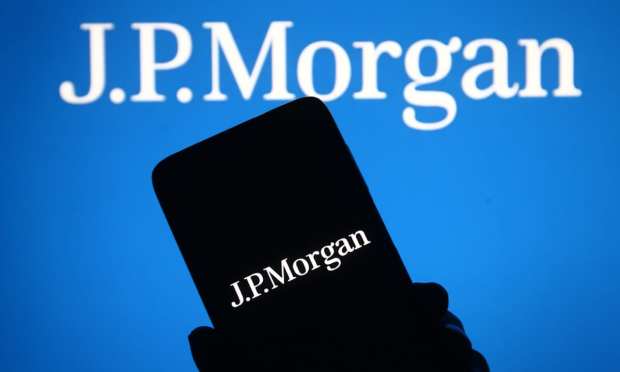JPMorgan Credit Card Sales Volume Surges 45 Percent, Active Mobile Customers Rise 10 Percent

J.P. Morgan Chase posted second-quarter results that showed continued gains in credit and debit card spending, at a time when consumers paid down card debt and mobile banking use also grew.
In terms of headline numbers, earnings of $3.78 per share were significantly better than the average analyst estimate of $3.21, but came as a result of the company releasing $3 billion in unused loan loss reserves, which followed a $5.2 billion release in the first quarter.
The company said in its release that net charge-offs were down 53 percent year over year, and CEO Jamie Dimon said the decline in charge-offs reflected the “increasingly healthy condition of our customers and clients.” Revenues of $31.4 billion also topped consensus, at $29.9 billion.
Though the Street may, per usual, train its sights on investment banking and trading activity, drilling down into the supplementals provided by the company shows that the company released $1.8 billion of reserves related to its card business (versus a $2.9 billion “build” in the same quarter a year ago), with another $600 million released from home lending operations.
The company said that debit and card sales volume was up 45 percent year over year, to $344 billion, which was up 19 percent from the first quarter of this year. With a bit more granular detail, credit card sales volume — excluding commercial cards — stood at $223.7 billion, up 51 percent from last year and up 22 percent from the first quarter of this year.
Dimon said in the release that spending growth was evident in categories including travel and entertainment, which returned to growth in June, up 13 percent vs. 2019, where that segment had been down 11 percent as recently as April, management noted on the conference call with analysts. Total consumer and community banking-related revenues gained 2 percent sequentially and 3 percent year over year to $12.8 billion.
The credit card net charge-off rate declined year over year and sequentially, reflecting an improved credit picture. The company said in its latest supplementals that the net charge-off rate in the quarter was 2.24 percent, which was down from 2.97 percent seen in the first quarter of this year and 3.33 percent from a year ago. The 30-day delinquency rate on the card business was 1.01 percent.
As a result of the strong credit card results, card-related income was $1.2 billion, up 86 percent year on year and 22 percent sequentially. In a sign that cardholders have been busy paying down their balances, the supplementals reveal that card loans at the end of the period were $136.1 billion, down 4 percent year over year. Total deposits at the end of the period were a bit more than $1 trillion, up 25 percent from last year.
The Mobile Metrics
Drilling down into the mobile side of the business, the company said that the number of branches declined slightly to 4,869, down from 4,872 in the first quarter. Active digital customers grew by 4 percent year on year to 56.9 million, while active mobile customers gained 10 percent year on year to 42.9 million.
With a nod to the competitive landscape in mobile banking and the digital delivery of financial services, on the conference call with analysts, CEO Dimon noted in response to a question about disintermediation that “obviously there’s always a changing landscape, but we’ve got brands and capability and products and services and market share and profitability … we’ll be fine.”
